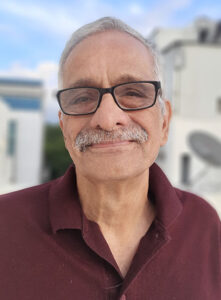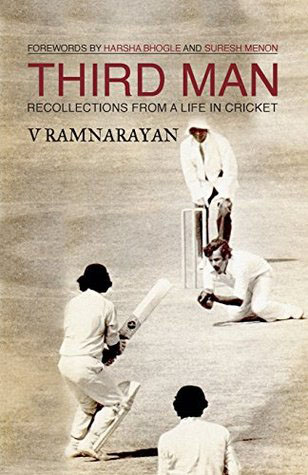Registered with the Registrar of Newspapers for India under R.N.I 53640/91
Vol. XXXI No. 1, April 16-30, 2021
How Green was my Chepauk
Cricket and Much Else

“He gave me the confidence I could write on a variety of subjects, way beyond cricket, by assigning me numerous projects both for Madras Musings and the books I assisted him with for a few years. Because of him, I became the asthana editor for the M.S. Swaminathan Research Foundation for a while.
My substantial contribution to The Spirit of Chepauk and All in the Game, both on the Madras Cricket Club, led to my first independent book assignment, Mosquitos and Other Jolly Rovers, and later R.K. Swamy, A Life In Advertising. He was a hard taskmaster, but a fair one, who was obsessive about fact-checking, something that helped me a great deal professionally. He encouraged many of us to write books, and it was my informal training with him that made me a writer. He did me proud by speaking at two of my book releases (he hated the word ‘launch’). At one of them, releasing Third Man, my cricketing memoir, he stressed the importance of biography as history, giving me a ‘collar-up’ moment, as we say in these parts.”
– V. Ramnarayan

I first set my eyes on the beautiful English village green-like outfield of that elite Cricket Club of Madras, the Madras CC, in the Sixties. Every youngster dreamt of playing there one day, of diving full length on its springy, velvety grass, without bruising himself badly as he was likely to on any other ground. The only other exception to the general rule of matting wickets and less than adequately grassed outfields prevalent then in all of Madras was another lovely ground, this one in distant Tambaram, inside the sylvan campus of the Madras Christian College.
There was magic in the air as I stepped into the old pavilion of pre-stadium vintage. Everything looked as I had imagined an English clubhouse would look like, from years of being brought up on a diet of Wisden-s, Sport and Pastime-s and Test Match Specials. There were wrought iron chairs — and cane ones — there was a coir carpet on the wooden floor, the bathrooms were tiled and there were lockers for players to keep their stuff in. It all seemed luxurious and ever so stylish. The names of Indians and Europeans, Test teams and other first class cricket elevens who played at Chepauk inscribed on the wooden panels on the walls lent just the right touch of nostalgia and enchantment. C.P. Johnstone and H.P. Ward figured in so many places. Nailer was someone I had heard my uncle P.N. Sundaresan describe, with rapture in his voice, for the daring of his stroke play. There were other names which excited my interest for more immediate reasons. A.W. Stansfeld was someone who lived not very far from my home and to realise that he had batted, bowled and fielded on this very ground all those aeons ago was to feel a quickening of the pulse.
I could not wait to change into my cricket gear and run on to the ground to knock a few around or take some catches or merely take in lungsful of Chepauk air. I dashed out of the gracious old clubhouse, past the lawn and on to the tree-shaded ground only to find that half my teammates were already there, showing alacrity and athleticism while they were making the most of a rare opportunity. Can today’s young cricketer who has so many first rate cricket grounds and such splendid facilities to choose from, ever understand the thrill we felt in our hearts on our first outing at Chepauk?
It was what is known in Madras cricket parlance as a practice match, meaning nothing was at stake beyond aching bones and good-natured leg pulling at the end of the match – no trophy, no title, no points won or lost. For most of us, it was our first experience of a turf wicket. I remember that fielding was an undiluted pleasure that day and we all chased, dived and picked and threw as we had only seen happen in Test matches.
I also remember that the Chepauk wicket was a truly sporting one. It had some purchase for the quicker bowlers as well as the spinners, without offering much turn, but the bowlers could hardly complain of lack of life in the turf. Batting on it was sheer delight. Even I, normally a tail-ender, enjoyed a measure of success, driving off both front and back foot. I had on that occasion my first glimpse of the teasing swing of Bala, the accurate medium pace of M. Subramaniam and the relatively quick bowling of Prabhakar Rao. I was to play strokes with a freedom seldom experienced by me on matting.
There were loud guffaws from the close-in fielders every time I sent the ball to the boundary and I was puzzled if not hurt by their seeming amusement at the way I batted. It took me a while to realise that they were actually pulling the legs of their bowlers; it was all part of the camaraderie and sense of fun that characterised the Madras CC’s matches — the practice matches at any rate.
Extracts from the book: The Spirit of Chepauk, The MCC Story, 150 Years of a Sporting Tradition.

